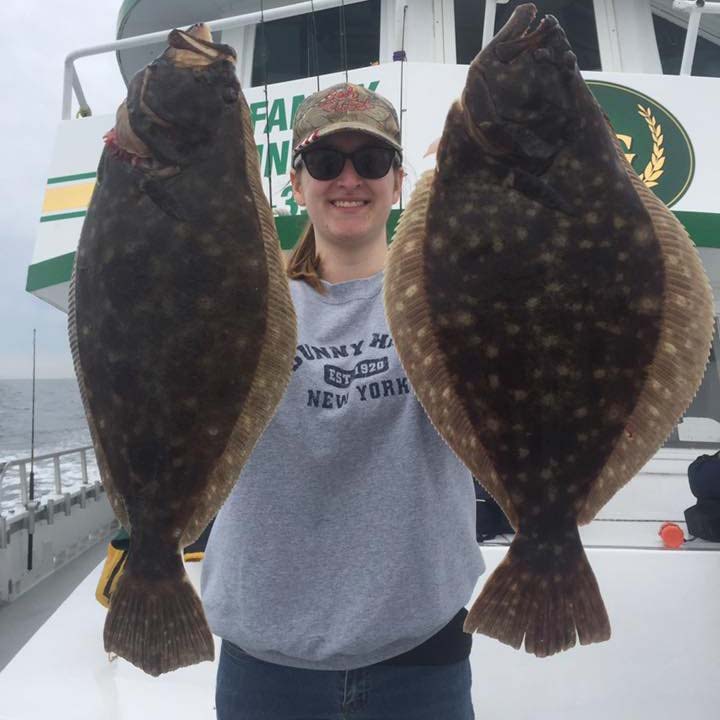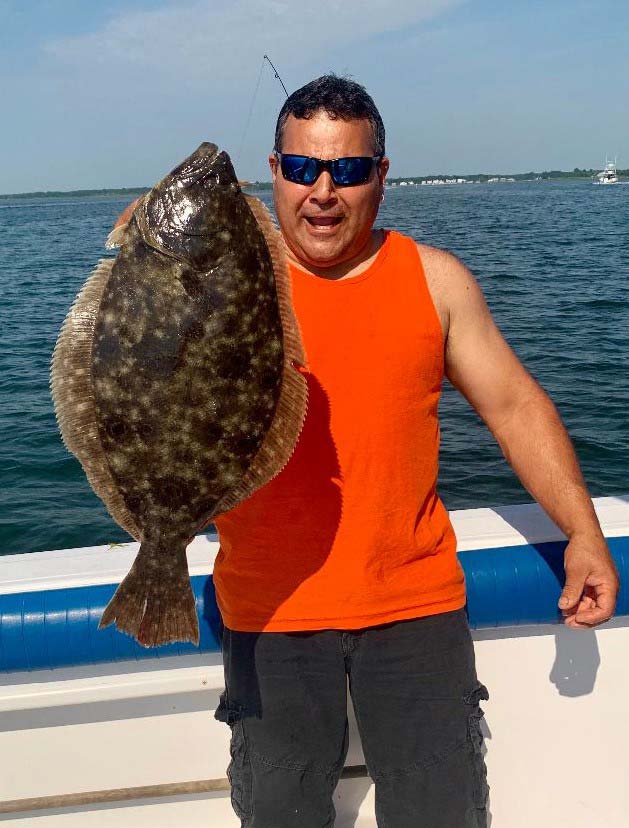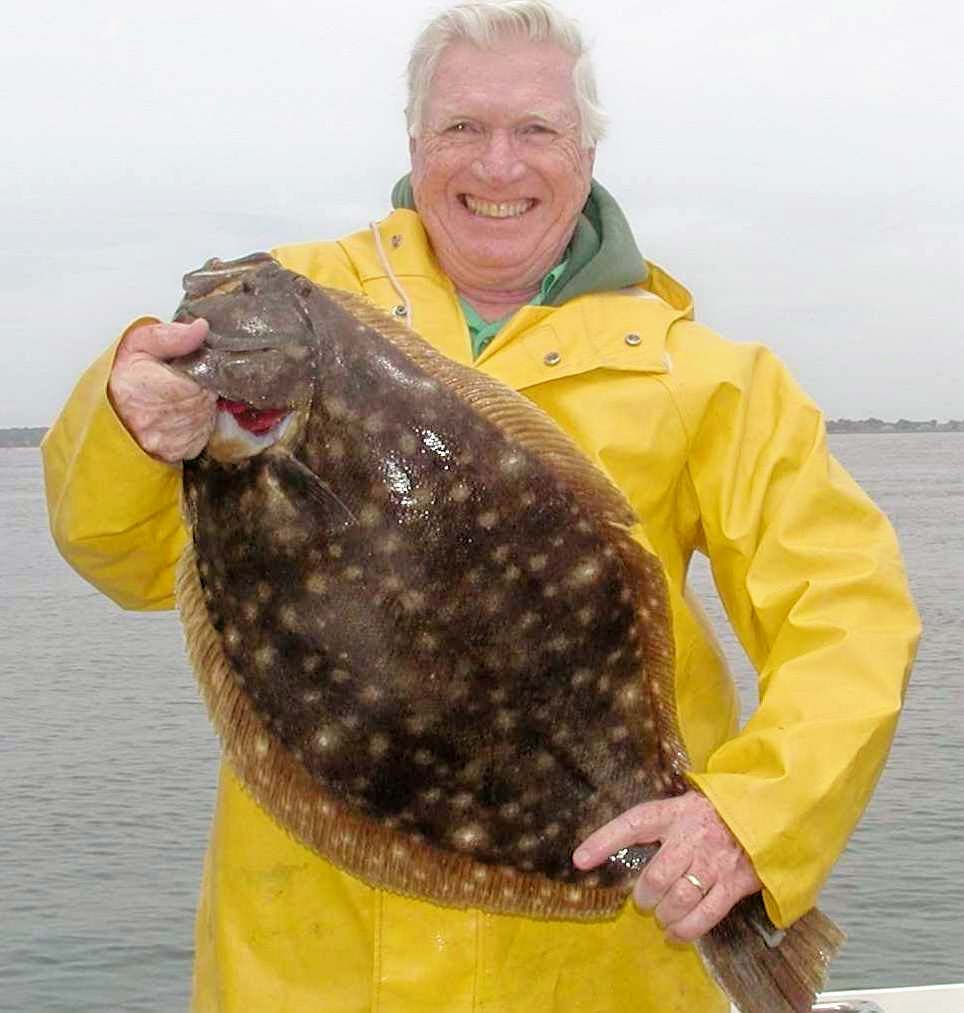
Take advantage of the longer season to score a North Shore doormat.
Most Long Island anglers fluking during the spring and early summer along the shallow water shoals lining much of the North Shore beaches of the Long Island Sound will be startled to learn that the entire process of exceptional fluke fishing repeats itself once again during the fall. Indeed as most anglers are sharpening their blackfish hooks or working on filling tubs with hefty plump porgies, there are a small percentage of knowledgeable and savvy anglers that are taking advantage and enjoying a run of fluke that, quite frankly, produces some of the finest fishing the Sound has to offer despite what the calendar might say. Therefore you may want to put the scup and tog gear aside for a bit longer and breakout the fluke gear until the October 9 closure for a last shot at putting some tasty flatties in the box before the tog rods come out.
They Come And They Go
Regardless of the masses of summer flounder that enter the Long Island Sound each spring, the same biomass must also depart these waters for deeper warm waters of the Gulfstream that flow offshore along the Continental Shelf. It all begins during the spring when a myriad of baitfish that include spearing, white anchovies, killifish, mantis shrimp, sand eels, small lobsters, a variety of crabs situate themselves around clusters of stones and vegetation upon the shoals in order to spawn before dispersing for safer waters located in the bays and harbors or the deeper variations located out in the Long Island Sound. However, during those spring flings that concern baitfish spawning on the shoals, the carnivorous fluke will spend their spring and early summer upon these very same hot spots feasting on the buffet.
As spawning season draws to a close (usually just after the passing of the June full or new moon) the baitfish scatter and situate themselves on their preferred piece of real estate, which may be in the bays, harbors or the deep variations of the Sound. Unfortunately with so little left to feast on, the fluke will also scatter, often creating a challenge for North Shore fluke anglers to cultivate their skills of finding quality fluke during the remainder of summer.
As September and October roll in, so do many low pressure systems that begin pushing much of the tasty freebies out of their summer digs and burrows where they will again congregate among the shoals, setting their trails back offshore for their wintertime accommodations. Unbeknownst to the little guys, just when they thought it was safe to head for their wintertime safe haven, it becomes absolute mayhem when they find one of their most feared adversaries sharing the same trail as themselves. This comes as pure terror to the baitfish and pure joy to the savvy fluke fishermen who are knowledgeable.

Staying On Their Trail
The question most anglers who may only fish a day or two throughout the week may ask is where to start? A fair question indeed and for anyone coming from any bay or harbor from the lower Hudson to Gardiners Bay, should start at their local shoals of depths between 10 and 25 feet during high tide. With that said, a good bottom recorder is paramount to finding high spots and schools of baitfish. A GPS will certainly come in handy to mark any productive pieces of bottom.
| CATCH AND CUT |
| If you prefer to use the real meat on the jigs, the old standby of spearing and squid strips will produce. Although, with the abundance of sea robins that share the same grounds as the fluke on the North Shore, I strongly suggest catching a couple, stripping them down and applying them to the bucktails. Fluke find fresh sea robin strips so irresistible. Strip down the bellies to about 4 inches, which work remarkable on the small bucktails, while robin strips of 6 inches work best on the larger 2-ounce or better size bucktails. If available, you can add fresh bluefish or dogfish strips to the list too. |
The most successful method at any of the shoals is to determine the direction of the drift and fish along the down or inclines. Fishing sandy fringes between points of rocky or artificial structure that sit on the bottom of a shoal are also strongly productive areas as, more often than not, fluke will ambush unsuspecting prey in such areas. Some terminal gear will succumb to unseen obstructions no matter how hard you try to stay clear. The loss of some terminal gear is often quickly forgotten as such areas often surrender the largest fluke.
Fortunately, there are many stopovers where big fluke will pass on their way offshore. The key is baitfish. Find the baitfish near or on the bottom and there is a good chance of finding fluke. Break lines and drop-offs are often great places to find bait at just about any depth.
Another option is locating and fishing areas where the bottom has been dredged. Not only do these holes attract big fluke, it’s also these locations that hold big sea bass and porgies during the fall season which are also an added bonus to the day’s catch.
Too Fast Or Too Slow
Drifting is an essential piece of the equation to the success of fluke fishing. A drift of 1 to 1-1/2 knots is ideal in the deep water since this speed will keep the fluke aggressively chasing down your bait while minimizing the activities of undesirables such as skates and dogfish. A drift slower than a half-knot often results in a burdensome pick of skates which can make for a frustrating time.
One way to resolve the issue of a slow drift is by power drifting. Kicking the engine in and out of gear and keeping the boat at 1 knot to 1-1/2 knots will help ease the skate activity.
A drift much over 2 knots may be too fast, requiring additional weight to hold bottom and will result in a lot of short strikes. All is not lost with a fast drift either. A sea anchor is the solution to slow the drift down allowing the rig to stay on the bottom and give the fluke a shot at the bait. Try to hold off on days when wind against tide eats up most of the trip as such conditions usually results in a tough pick.

Tackling Fall Fluke
I think you’ll agree that baitcasters and conventional outfits in the 10- to 15-pound class are best suited for the job. You’ll appreciate a combo light enough not to cause fatigue from working the outfit all day, yet strong enough to manage the brutality of a hefty fluke. An outfit I rely on to manage the job is the 7-foot KastKing PE-C701MF Baitcaster rod joined with an Ecooda Tiro 50 Caster EX reel loaded up with 15-pound KastKing Braid. The outfit is light and well suited for most jigging and rigging applications to 8 ounces.
No matter your arsenal, an 8- to 10-foot shock leader, preferably fluorocarbon of 30 or 40 pounds should be tied to the mainline via an Albright Knot. Seaguar and Yo-Zuri both make great products for the job. The good ole and reliable Improved Clinch Knot will complete the terminal end if you decide to use a jig or a 3-way swivel for simple rigs.
Choose Your Ammo
| SUCCESSFUL EXPERIMENTING |
| I would like to mention that last fall, my buddies spent time experimenting and found that 1 or 2-ounce diamond jigs tipped with a 4-inch Gulp and jigged tight to the bottom had convinced a handful of keeper fluke and sea bass to commit to the unorthodox offering. They found that the hammer finish jig produced better than the smooth nickel finish jigs. In addition, they found that the Limerick hook that came attached to the jig was getting snagged on the leader, so they went and replaced the Limerick hook with a super sharp Gamakatsu 5/0 Siwash hook and have had no problems with snagging the leader any longer. Make sure to use the Siwash with the open eye to make replacing a breeze. |
Fluke rigs can be as simple as a plain hook and sinker, or rigs and jigs with all the bells and whistles. Many of them do a fine job of spooking off big fluke. Not surprisingly, many double-digit flatties are taken on just a plain hook and sinker baited with a spearing and a strip of squid. And though most veteran fluke hunters are aware of the fact, there’s something about bucktail jigs that certainly adds zest to the game.
Depending on conditions, I’ll employ bucktails ranging from 3/8 to 2 ounces. Should I require more weight, I’ll toss the sea anchor over to slow the drift. Under normal drifting conditions, I will slip a 3/8-ounce Spro Prime Bucktail approximately 18 inches up a 15-pound fluorocarbon leader and a second 3/8-ounce bucktail approximately 24 inches above the bottom bucktail which will be the trailer, weighing between 1 and 2 ounces. I tie the two teaser 3/8 bucktails via Dropper Loops, while I’ll apply an Improved Clinch Knot to the bottom trailer bucktail. This rig is also known as the Chicken Rig.
It is paramount that the water depth and the speed of the drift determines the size of the bucktails employed. As for applying Gulp, I’ll add a 3-inch Gulp Swimming Mullet to the small bucktails and a 6-inch Swimming Mullet Gulp on the larger jig. I believe the scent of the Gulp is more relevant than the color, however, if it is a concern, white, chartreuse, Nuclear Chicken and New Penny are what I would suggest as the standards. As for the bucktail colors, glow, white, spearing blue and crazy chartreuse seem to be the most consistent for me on the North Shore.

Play It Cool
The cunningness and cautiousness has allowed bruiser fluke to live a long life, and just like us humans, the older they get, the less aggressive they become. Therefore, be patient, never take the bait away from a fluke if you miss it on the first bite. The biggest mistake many anglers make is taking major league swings, and then reeling up to see if any bait remains. This is a no-no. Instead, keep the bait down there for at least a minute or two. Big fluke will follow bait a long time before committing to it. Therefore, give them a chance.
Every fisherman I know enjoys fishing for fluke during the spring, summer and fall with dreams of catching that one monster of a lifetime. If there are no major storms or hurricanes, history should again repeat itself as it does every September and October along the shoals of the North Shore. The window of opportunity is short; however, rest assured there are some monster flatties along the fall trail heading for their offshore winter sanctuary. If you are a Fisherman subscriber, this season’s Dream Boat Challenge has another Steiger Craft waiting for a new owner. And you have additional days this year to place in the fluke category! Do I need to say more?




